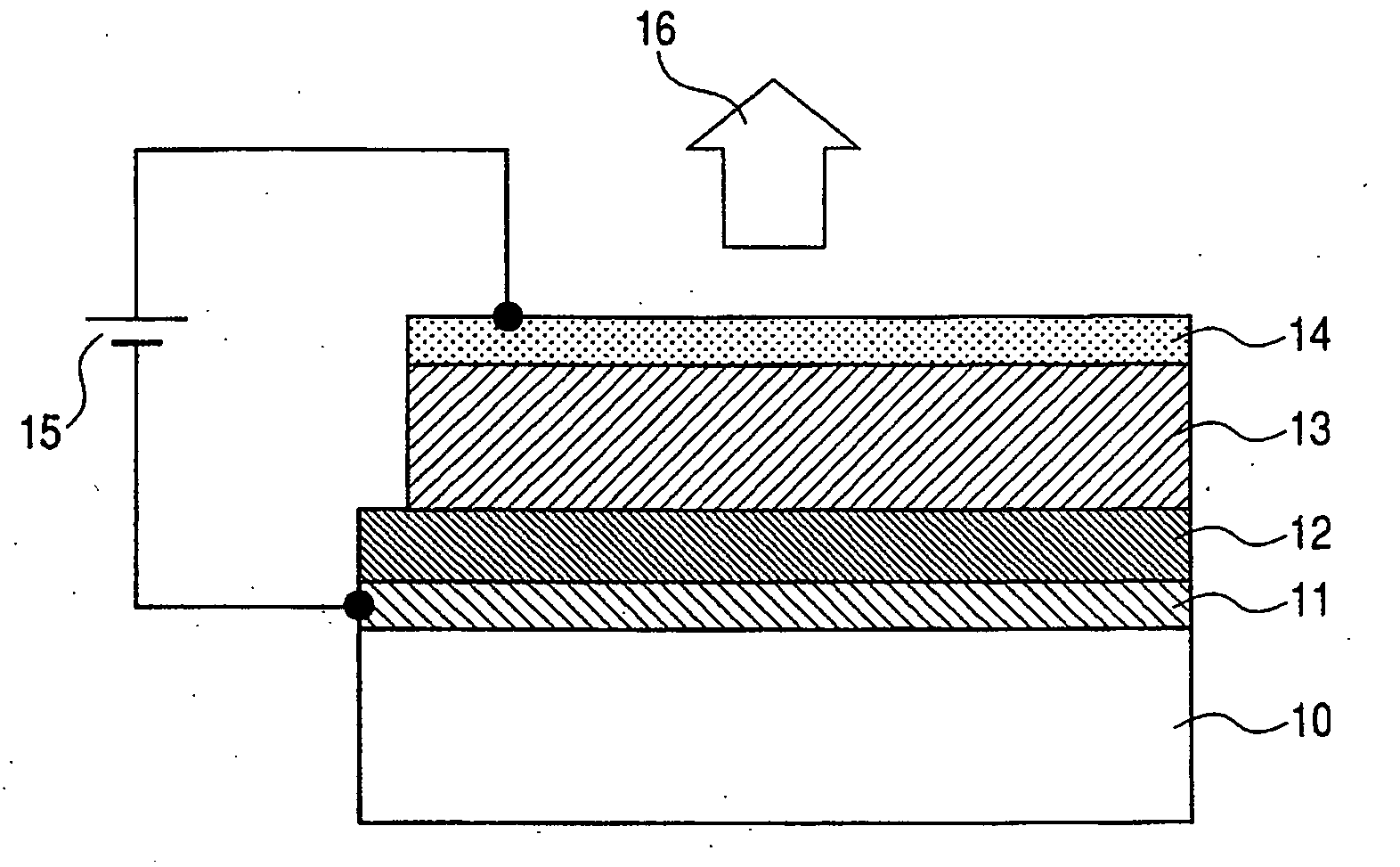Light emitting device and its manufacturing method
a technology of light emitting device and manufacturing method, which is applied in the direction of solid-state devices, electric lighting sources, electric lighting sources, etc., can solve the problems of limited display range, difficult to form on glass or plastic substrates, and difficult to meet the requirements of lighting uniformity, etc., to achieve excellent luminous uniformity, low voltage, and drive stably
- Summary
- Abstract
- Description
- Claims
- Application Information
AI Technical Summary
Benefits of technology
Problems solved by technology
Method used
Image
Examples
example 1
[0065] The light emitting device of this example comprises the structure described in FIG. 1. Microstructured layer 12 has the structure shown in FIG. 2B1 and 2B2, the first material is based on alumina, and the second material is based on silicon oxide.
[0066] Now, description will be made following the production steps.
[Formation of a First Electrode Layer]
[0067] A quartz substrate is prepared as a substrate 10. As a first material electrode layer 11, a Ta film with a thickness of 100 nm is formed on substrate 10 by a magnetron sputtering method.
[Formation of a Microstructured Layer]
[0068] A film of Al—Si matrix was formed on the first electrode layer at room temperature by a magnetron sputtering method. A target having a Al and Si composition ratio of (56:44) was used and an input power is 150 W. The Al—Si matrix comprises a matrix-structure, in which circular cylindrical columnar aluminum domains with a sectional diameter of about 7 nm are embedded in a matrix composed of Si...
example 2
[0071] The light emitting device of the present invention comprises the structure described in FIG. 4B. Microstructured layer 12 has the structure shown in FIGS. 2B1 and 2B2, and its first material is based on iron oxide, and its second material is based on silicon oxide.
[0072] Now, description will be made following the production steps.
[Formation of a Transparent Electrode Layer]
[0073] As substrate 10, a quartz substrate was used. An ITO film with a thickness of 200 nm was formed on substrate 10 by a magnetron sputtering method as a transparent electrode layer 14.
[Formation of a Microstructured Layer]
[0074] Next, a microstructured layer is formed on the transparent electrode layer 14 by a magnetron sputtering method, in which the target composed of a mixture of FeO powder and SiO2 powder with a volume ratio, FeO:SiO2=3:7 is used.
[0075] Next, the obtained structure is subjected to a heat treatment at 600° C. under an air atmosphere.
[0076] Thereby, the microstructured layer 1...
example 3
[0079] The light emitting device of the present invention comprises a structure described in FIG. 5. Reference numeral 17 denotes a third electrode layer, reference numeral 15a denotes a drive power supply, and reference numeral 15b denotes a second power supply. Electrons accelerated between the first electrode layer 11 and third electrode layer 17 are transmitted through the third electrode layer and injected into light emitting layer 13. Thus, the light emission layer is excited, thereby, light emission occurs.
[Formation of a First Electrode Layer and a Microstructured Layer]
[0080] A first electrode layer 11 and a microstructured layer 12 are formed on substrate 10, in a similar manner as in example 1.
[Formation of a Third Electrode Layer]
[0081] Next, as a third electrode layer 17, an Al film or an Au film with a thickness of 5 nm order is formed. In order to be transmitted by electrons, it is preferable for the layer to be thin as long as it acts as an electrode.
[Formation...
PUM
 Login to View More
Login to View More Abstract
Description
Claims
Application Information
 Login to View More
Login to View More - R&D
- Intellectual Property
- Life Sciences
- Materials
- Tech Scout
- Unparalleled Data Quality
- Higher Quality Content
- 60% Fewer Hallucinations
Browse by: Latest US Patents, China's latest patents, Technical Efficacy Thesaurus, Application Domain, Technology Topic, Popular Technical Reports.
© 2025 PatSnap. All rights reserved.Legal|Privacy policy|Modern Slavery Act Transparency Statement|Sitemap|About US| Contact US: help@patsnap.com



